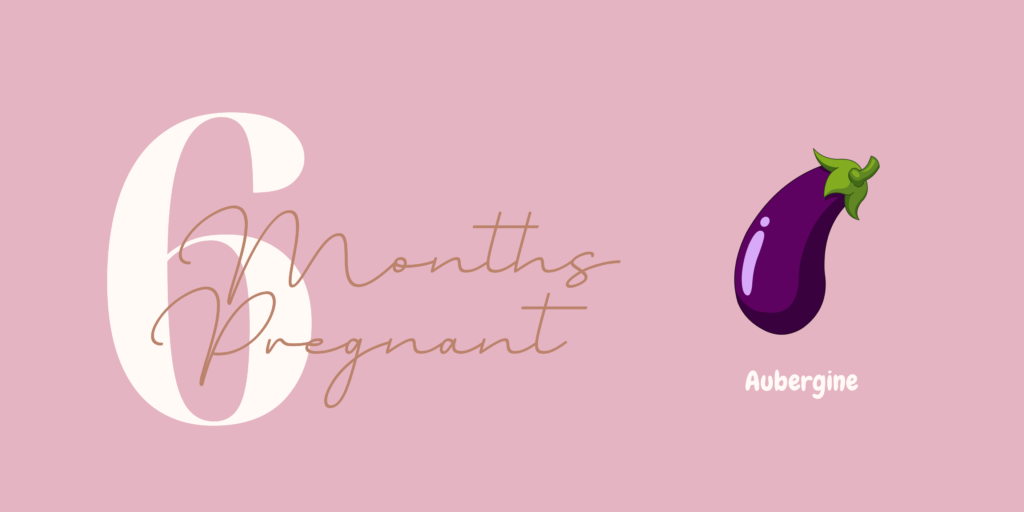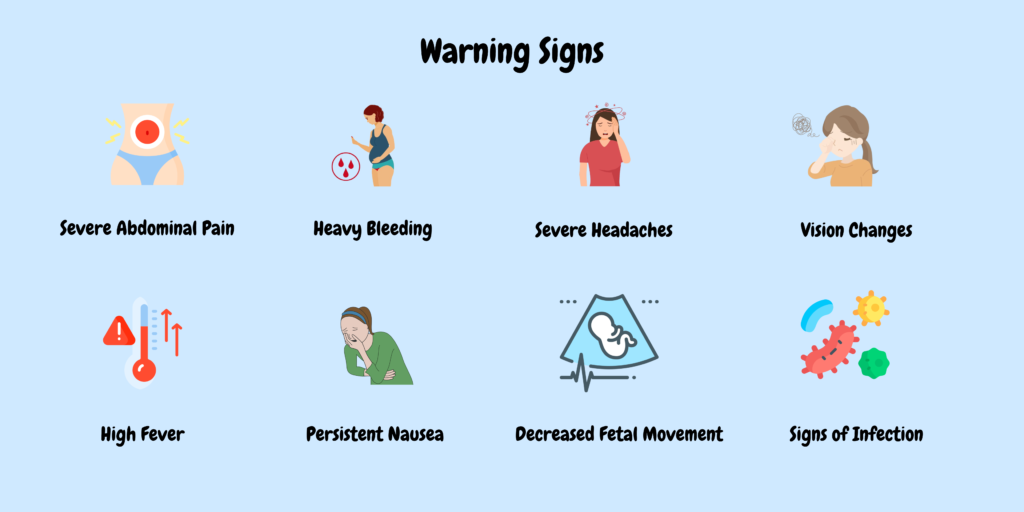6th Month of Pregnancy (23-27 weeks)

At six months pregnant typically covering (23 to 27 weeks), you are entering the third trimester of your pregnancy. This stage typically marks significant growth and development for your baby, who is now about the size of an Aubergine. You may experience increased physical changes, such as a growing belly, and possibly symptoms like back pain, fatigue, or heartburn. Emotionally, this period can bring a mix of excitement and anxiety as you prepare for the arrival of your little one. Overall, it’s a time of anticipation as you connect with your baby and make plans for the future.
On this page
1. Common Pregnancy symptoms at 6th months pregnant
At six months pregnant, you may experience a variety of common symptoms, including:
- Increased Fatigue: As your body works harder to support the growing baby, you may feel more tired than usual.
- Back Pain: The added weight and changes in posture can lead to discomfort in the lower back.
- Heartburn and Indigestion: As the uterus expands, it can put pressure on the stomach, causing digestive issues.
- Swelling: Mild swelling in the feet, ankles, and hands can occur due to fluid retention.
- Shortness of Breath: As the baby grows, it may push against your diaphragm, making it feel harder to breathe deeply.
- Increased Urination: Pressure on the bladder may cause more frequent trips to the bathroom.
- Braxton Hicks Contractions: You might start to feel practice contractions as your body prepares for labor.
- Changes in Skin: Some women experience stretch marks, darkening of the skin, or a “pregnancy glow.”
- Mood Swings: Hormonal changes can contribute to emotional ups and downs.
- Changes in Appetite: You may find cravings or aversions to certain foods.
These symptoms can vary from person to person, and it’s always a good idea to discuss any concerns with your healthcare provider.
2. Fetal Development

At six months pregnant, significant fetal development occurs:
- Growth: The baby continues to grow rapidly, reaching about 1.1 to 1.5 pounds and measuring around 11.5 to 14 inches.
- Skin and Fat: The skin is still thin and translucent but begins to develop a layer of fat, which helps with insulation and energy storage.
- Movement: You may feel increased fetal movements as the baby becomes more active, practicing skills like kicking and stretching.
- Organs: The lungs are developing, and the baby is practicing breathing movements by inhaling amniotic fluid. The brain is also rapidly growing, and connections between nerve cells are forming.
- Sensory Development: The baby can now hear sounds from outside the womb, such as voices and music, and may respond to them.
- Facial Features: The facial features become more distinct, with the eyes now moving into their proper position and eyelashes and eyebrows starting to form.
Overall, this is a crucial period of growth and development as the baby prepares for life outside the womb.
3. Baby Bump
At six months pregnant, your baby bump is likely quite noticeable. The belly typically has a rounded shape as the uterus expands to accommodate the growing baby, which is now about the size of a aubergine. The skin may be stretched, and you might see some changes like stretch marks or a darker line running down the center of your belly.
Many women find this stage exciting, as the baby’s movements become more pronounced and you can start to share your pregnancy journey more visibly with others.
4. Size and Weight of Baby
At six months pregnant, the baby typically weighs between 1.1 to 1.5 pounds (about 500 to 700 grams) and measures around 11.5 to 14 inches (about 29 to 36 centimeters) in length. During this stage, the baby continues to grow rapidly, developing more distinct features and gaining more fat to help regulate body temperature after birth.
5. Fetal Movements at 6th months pregnant
At six months pregnant, fetal movements become more pronounced and frequent. You may notice:
- Increased Activity: The baby is more active, with movements becoming stronger and more noticeable. You might feel kicks, rolls, and stretches.
- Pattern of Movements: Many women begin to recognize a pattern in their baby’s movements, which can help indicate the baby’s well-being. You may notice times when the baby is more active, often after eating or during the evening.
- Variety of Movements: Movements can vary from gentle flutters to more vigorous kicks. Some women may even see their belly move as the baby shifts positions.
It’s normal to have fluctuations in activity levels, but if you notice a significant decrease in movement, it’s important to contact your healthcare provider for advice and reassurance.
6. Checklist for when you’re at 6th months pregnant
Here’s a checklist for when you’re six months pregnant:
- Prenatal Check-Up: Schedule and attend your regular prenatal appointment.
- Monitor Fetal Movements: Keep track of your baby’s movements.
- Stay Hydrated: Drink plenty of water to stay hydrated.
- Nutrition: Focus on a balanced diet rich in fruits, vegetables, whole grains, and protein.
- Prenatal Vitamins: Continue taking your prenatal vitamins as recommended.
- Plan for Baby’s Arrival: Start creating a birth plan, if you haven’t already.
- Start Shopping for Baby Essentials: Consider items like clothes, diapers, and gear.
- Prepare the Nursery: Begin organizing the baby’s room or sleeping area.
- Childbirth Classes: Consider enrolling in childbirth education classes.
- Read Books/Resources: Educate yourself on childbirth, breastfeeding, and newborn care.
- Self-Care Routine: Set aside time for relaxation and self-care, such as prenatal yoga or meditation.
- Comfortable Clothing: Invest in comfortable maternity clothes as your body changes.
- Footwear: Choose supportive shoes to help with swelling and back pain.
- Insurance and Hospital Registration: Ensure your health insurance covers your prenatal care and delivery. Pre-register at your chosen hospital if applicable.
- Discuss Leave Plans: Talk to your employer about maternity leave and any necessary arrangements.
- Talk to Your Partner: Keep open communication with your partner about your thoughts and feelings regarding the pregnancy.
This checklist can help you stay organized and ensure you’re prepared as you move closer to welcoming your baby!
7. When to see a doctor

At six months pregnant, it’s important to maintain regular prenatal appointments, but there are specific situations when you should see a doctor:
- Decreased Fetal Movements: If you notice a significant decrease in your baby’s movements or if you can’t feel the baby move for an extended period.
- Severe Abdominal Pain: Any persistent or severe abdominal pain that doesn’t go away.
- Heavy Bleeding: Spotting can be normal, but heavy bleeding or passing clots is a cause for concern.
- Severe Headaches: If you experience severe or persistent headaches that don’t respond to usual pain relief methods.
- Visual Changes: Blurred vision, sudden loss of vision, or seeing spots can indicate issues that need attention.
- Swelling: Sudden swelling of the hands, face, or feet, especially if it’s accompanied by headaches or visual changes.
- High Fever: A fever over 100.4°F (38°C) that doesn’t improve with treatment.
- Signs of Preterm Labor: Symptoms like regular contractions, lower back pain, pelvic pressure, or fluid leakage.
- Urinary Issues: Painful urination, blood in urine, or signs of a urinary tract infection.

